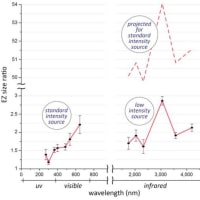Thomas Levy氏の著書に記載されている各種のウイルス・細菌に対するビタミンCの適用の記事の翻訳リストは、次のブログ記事にまとめてあります:
Thomas Levy ビタミンCによる感染症と毒物の治療の本の効果のまとめ
Levy p.68麻疹
Thomas Levy、ビタミンCによる感染症と毒物の治療の本
Curing the Incurable: Vitamin C, Infectious Diseases, and Toxins (英語) ペーパーバック – 2011/8
治癒不可能なものを治す: ビタミンC、感染症疾患、及び毒素
Thomas E. Levy (著)
68
Measles (Curable and Preventable) 麻疹(治癒可能、予防可能)
The 21st edition of the Cecil Textbook of Medicine characterizes measles as an acute and highly contagious disease accompanied by fever, cough, runny nose, inflamed eyes, and a rash.
セシル医学教科書21版は、発熱、咳、鼻水、炎症を起こした眼、および発疹を伴う急性かつ高度に伝染性の疾患として麻疹を特徴づけています。
Although significant complications are relatively rare, measles can sometimes be fatal when the disease proceeds to a viral pneumonia or to a viral brain infection.
重大な合併症は比較的まれではありますが、麻疹はウイルス性肺炎またはウイルス性脳炎感染に進行すると致命的となることがあります。
The Cecil Textbook of Medicine states that there is "no specific antiviral therapy" for measles, and bed rest remains the recommended treatment in the absence of complications.
セシル医学教科書には、はしかのための「特異的な抗ウイルス療法」はないと述べられており、合併症がなければベッドでの休息が推奨されます。
Attempted prevention of measles by the use of the measles, mumps, and rubella (MMR) vaccine is the primary intervention offered by modern medicine for this disease.
麻疹、流行性耳下腺炎および風疹(MMR)ワクチンの使用による麻疹の予防を試みたのが、この病気に対する現代医学の主要な介入である。
Klenner (1953) dealt with the treatment of measles in the care of his own young daughters.
クレナー(1953)は、彼自身の若い娘の治療で麻疹の処置を取り扱った。
They contracted the disease during an epidemic in North Carolina during the spring of 1948,
彼女たちは、1948年春のノースカロライナの流行の際にこの麻疹にかかった。
Vitamin C therapy was started as soon as the diagnosis of measles was clinically certain,
ビタミンC治療は、麻疹の診断が臨床的に確実になると直ぐに開始された。
Klenner was very confident that high doses of vitamin C would destroy the virus at any point, and he proceeded to see what smaller doses of vitamin C would do to the development of the disease,
クレナーは、高投与量のビタミンCは、全ての点でウイルスを破壊すると非常に確信していた、そして彼は少量のビタミンCは麻疹を進展させることを観察し続けた。
Doses of 1,000 mg by mouth every four hours clearly improved the symptoms, although smaller doses were noted to allow the disease to progress.
4時間おきに1000mgの経口投与は明白に症状を改善した、しかしこれより少ない投与量は麻疹を進展させたと記録された。
When Klenner proceeded to administer 1,000 mg by mouth every two hours, all evidence of the infection was cleared within 48 hours,
クレナーが2時間おきに1000mgを経口投与し続けると、感染の全ての証拠は48時間以内に消えた。
However, discontinuation of the vitamin C at this point allowed the return of the disease.
しかしながら、この時点でビタミンCを中止すると、麻疹が再発した。
Klenner was able to demonstrate that the measles could be symptomatically controlled but not eradicated by this pattern of vitamin C dosing for a period of 30 days.
クレナーは、麻疹は症候性にコントロールできることを示したが、30日間に渡るこのパターンのビタミンC投与により根絶できなかった。
(訳注: この記載は完全な間違い。クレナーの元論文にはこんなことは一言も書いていない。2人の娘の症状を観察した期間が30日だと言っているだけである。2人の娘が、同時ではなく、時間がずれて発症し、クレナーがCを投与して治療経過を観察したのが合計30日だと言っているだけである。)
At this point he again gave 1,000 mg every two hours around the clock for four days, and the infections were permanently eradicated.
この時点で、彼は再び4日間に渡り1日中2時間おきに1000mg(訳注合計1日12g)を投与し、麻疹は永久に根絶された。
Klenner noted that for "the first time a virus infection could be handled as if it were a dog on a leash."
クレナーは、ひもにつながれた犬のように、初めてウイルス感染を処置できたと記録した。
This single clinical experiment conducted by Klenner probably best exemplifies that vitamin C simply must be given in high enough doses for a long enough period of time to effectively kill an invading virus.
クレナーにより実施されたこの1回の臨床経験は、侵入したウイルスを効果的に殺すために、ビタミンCは単純に十分に高い投与量を十分に長い期間に渡り投与しなければならないことを恐らく最も良く実証している。
Following the successful treatment of measles in his daughters, Klenner proceeded to treat new cases of measles with intravenous or intramuscular vitamin C.
自分の娘の麻疹の治療に成功した後、クレナーは、静脈投与また筋肉注射のビタミンCによる新症例の麻疹の治療を続けた。
He noted that he could achieve complete control of the disease within 24 to 36 hours after starting the treatment, with the response differing only because of variable doses and frequencies of administration.
彼は、治療開始後24から36時間以内に麻疹の完全なコントロールを達成することができ、投与量が異なり投与頻度が異なるため反応は異なっていた。
Klenner also noted that his patients were able to develop complete immunity to recontracting measles even when he had intervened early and cured the disease before the rash was ever allowed to develop,
彼の患者は、彼が早く介入して発疹が全く起きない前に麻疹を治した場合でさえ、麻疹再発に対する完全な免疫を持つことができたこともクレナーは記録した。
Klenner (1951, 1953) reported the case of a 10-month-old infant with reddened eyes and throat, high fever (105°F), cough, runny nose, and Koplik's spots.
クレナー(1951, 1953)は、赤い眼と喉、高熱(105F, 40.6℃)、咳、鼻水の垂れている鼻、コプリック斑のある10か月の乳児の症例を報告した。
Koplik's spots are essentially the typical rash spots seen in measles that appear on the mucous membranes inside the mouth prior to skin eruptions.
コプリック斑は本質的には、麻疹で、皮膚の発疹の前に、口の中の粘膜に現れる典型的な発疹スポットである。
A 1,000 mg dose of vitamin C was given intramuscularly every four hours.
ビタミンC投与量1000mgを、4時間おきに筋肉注射した。
After only 12 hours the cough had subsided, the redeyes and throat had cleared, and the temperature had normalized.
たった12時間で、咳は止まり、赤い眼と喉はきれいになり、体温は正常化した。
However, Klenner wanted to see whether the fever was just fluctuating or actually responding to the vitamin C like an antibiotic.
しかしクレナーは、熱が変動しているだけなのか、抗菌剤のようにビタミンCに実際に応答しているのか知りたかった。
No vitamin C was given over the next eight hours, and the fever went back to 103.4°F.
続く8時間はビタミンCを投与しなかったところ、熱は103.4F(39.7℃)に戻った。
After vitamin C therapy was restarted, the fever promptly decreased, and the baby made a complete and rapid recovery.
ビタミンC療法を再開した後、熱は迅速に低下し、赤ん坊は完全に迅速に回復した。
No measles rash ever developed on the skin, and Klenner noted that over the next four years the baby did not contract measles.
麻疹の発疹は皮膚には出ず、続く4年間に赤ん坊は麻疹にかからなかったとクレナーは報告した。
This is consistent with an acquired immunity to the disease even though the disease never became completely expressed clinically,
麻疹が臨床的に完全には表現されなかったが、麻疹に対する獲得免疫と一致する。
Klenner also treated a 22-month-old baby with a similar clinical picture to the 10-month-old baby noted above.
クレナーは、既に述べた10日月齢の赤ん坊に類似した臨床像の22か月齢の赤ん坊も治療した。
This baby responded rapidly in the same manner to vitamin C therapy, and the parents insisted on hospital discharge after only 36 hours,
この赤ん坊もビタミンC療法に同じように迅速に反応した、そして両親はたった36時間で退院を主張した。
Apparently still infectious, the baby's brother and sister developed measles four days later, and the baby broke out with measles seven days later.
明らかにまだ感染していたので、赤ん坊の兄弟と姉妹は4日後に麻疹を発症し、その赤ん坊は7日後に麻疹を発症した。
This again reinforces the absolute need to use enough vitamin C for a long enough period of time.
これは再び、十分な量のビタミンCを十分に長い期間に渡り使用する絶対的な必要性を強化した。
Paez de la Torre (1945) also reported good results treating measles with vitamin C.
パエズ デ ラ トレ(1945)も、ビタミンCで麻疹を治療する良い結果を報告した。
Kalokerinos (1976) reported the responsiveness of measles to vitamin C, and he added the importance of using the intravenous or intramuscular form of administration for optimal and reliable effect.
カロケリノス(1976)は、ビタミンCに対する麻疹の反応性を報告し、そして最適で信頼のできる効果のためには静脈投与または筋肉注射の使用の重要性を付け加えた。
70
As mentioned earlier, measles can kill when it invades the brain or the lungs,
前に述べたように、麻疹は脳または肺に侵入した時に殺すことが可能である。
Klenner (1953) discussed the case of an eight-year-old boy who presented with encephalitis, a viral infection and inflammation of the brain, as a complication of measles and mumps.
クレナー(1953)は、麻疹とおたふく風邪の合併症による脳炎(脳のウイルス感染と炎症)で来院した、8歳の少年の症例について議論した。
The boy was notably drowsy and listless, and his mother related that the child's increasing stupor, which was associated with headache, had developed over the prior four or five days.
その少年は、著しく眠そうでだるそうであり、彼の母親は、子供の増加する頭痛を伴う昏迷状態が4から5日前から始まったと関連づけた。
Although a very active child, he went to bed on his own with a temperature of 104°F.
非常に活動的な子供であったが、彼は体温104F(40℃)で自分でベッドに入った。
Klenner immediately gave 2,000 mg of vitamin C intravenously, and since no hospital beds were available, the child was then sent home.
クレナーは直ちにビタミンC 2000mgを静脈投与し、病院のベッドが使用できなかったので、その子供を家に帰した。
After two hours, the child developed an appetite, began playing around the house, and for several hours looked as though he had completely recovered.
2時間後、その子は食欲を起こし、家の周りで遊び始めた、そして数時間のあいだ、彼は完全に回復したかのように見えた。
However, after six hours, his symptoms began to return.
しかしながら、6時間後、彼の症状は元に戻り始めた。
About 18 hours after the initial vitamin C injection in the office, Klenner gave another 2,000 mg dose of vitamin C intravenously and added 1,000 mg to be given orally every two hours,
病院での最初のビタミンC注射の約18時間後、クレナーは2回目のビタミンC 2000mgの静脈投与を行ない、そして2時間毎に経口投与するために1000mgを追加した。
Consequently, the following day found the child free of fever and symptoms.
その結果、翌日、子供は熱も症状もなかった。
Wary of a relapse, however, Klenner gave yet another 2000 mg of vitamin C by vein and continued the oral regimen for another 48 hours,
しかしながら、再発を警戒して、クレナーはビタミンC 2000mgを静脈投与し、さらに48時間に渡り経口投与を続けた。
The child made a complete recovery, and never demonstrated any evidence of brain damage, even as long as five years later.
その子供は完全に回復し、最長5年後でさえも、脳障害のいかなる証拠も決して示さなかった。
Such damage is very common after surviving encephalitis,
そのような障害は脳炎に生き残った後も非常に一般的である。
Klenner added that "similar cases" to this boy had shown even more rapid and dramatic responses when the vitamin C was given by injection every two to four hours,
この少年に類似した症例は、ビタミンCを注射で2から4時間おきに投与すると、さらに迅速で劇的な反応であったとクレナーはつけ加えた。
71
Klenner (July 1949) also published some observations on the ability of vitamin C to protect those at risk from contracting measles during an epidemic.
クレナー(1949年7月)は、流行中に麻疹にかかるリスクから守るためのビタミンCの能力に関する幾つかの観察も出版した。
Not unexpectedly, the primary consideration was dose.
予想通り、主要な考察は投与量であった。
Klenner found that 1,000 mg of vitamin C by injection every six hours gave complete protection.
クレナーは、6時間毎のビタミンC 1000mgの注射は、完全に保護したことを発見した。
However, as much as 1,000 mg given in fruit juice every wo hours did not provide complete protection.
しかしながら、2時間おきにフルーツジュースに入れて1000mgを投与すると、完全な保護はできなかった。
This is further dramatic evidence that many of the so-called "megadoses" of vitamin C that are researched and published are very insufficient in the face of an enormous viral exposure,
これは、研究され出版されている多くのいわゆるメガドースのビタミンCは、著しいウイルス暴露に直面すると非常に不十分であるというさらに劇的な証拠である。
Anything in gram (versus are insufficient in the face of an miligram) doses is considered megadose in much of the literature, even if it is only one or two grams (1,000 to 2000mg).
グラム領域の投与量は、たった1gや2gでも、大部分の文献でメガドースと考えられている。
However, acute diseases, especially infectious ones, metabolize and utilize vitamin C at a seemingly astronomical rate.
しかしながら、急性疾患、特に感染疾患では、恐らく天文学的な速度でビタミンCを代謝し利用する。
Measles is an infectious disease especially notorious for causing nosebleeds.
麻疹は、特に鼻血で悪名高い感染疾患である。
Bleeding caused by the fragility of tiny blood vessels (capillaries) is also one of the characteristic findings in scurvy.
毛細血管の脆弱性により起きる出血は、壊血病の特徴的な所見の1つでもある。
This bleeding tendency resolves very reliably and promptly after the first or second injection of vitamin C.
この出血傾向は、ビタミンCの1回目または2回目の注射の後に、確実に迅速に消失する。
The overwhelming virus load seen in an acute case of measles may well often induce an acute case of scurvy, at least with regard to a greater likelihood of bleeding
麻疹の急性症例で見られる圧倒的なウイルスの負荷は、しばしば急性症例の壊血病を起こし、少なくとも出血を起こし易くなる。
Whenever a "maintenance" dose of several thousand milligrams of vitamin C still allows some infectious disease such as measles to take hold, vastly higher doses of vitamin C must still be immediately instituted to deal with the infection.
数千mgのビタミンCの維持投与量でも、まだ麻疹のような感染疾患が続く時には常に、感染を処置するために、はるかに高投与量のビタミンCを直ちに服用しなければならない。
The fact that the disease took hold while the individual was faithfully taking several thousand milligrams of vitamin C daily does not negate a much higher dosing of vitamin C as the treatment of choice.
その人が忠実に数千mgのビタミンCを1日に服用しているのに感染疾患が続くという事実は、治療の選択肢として、さらに高い投与量のビタミンCを否定するものではない。
The immune function in patients with measles was also demonstrated to be enhanced by the administration of vitamin C.
麻疹患者の免疫機能は、ビタミンC投与により増進することも示された。
Joffe et al. (1983) were able to demonstrate that vitamin C allowed for a more rapid recovery of certain lymphocyte subsets.
ヨフェ等(1983)は、ビタミンCは特定のリンパ球サブセットのより迅速な回復を可能にしたことを示すことができた。
This information alone might not seem to be very significant, but it makes a lot of sense in the context of the clinical responses that Klenner reported.
この情報だけではあまり重要とは思えないかもしれないが、クレナーが報告した臨床応答の関連では多くの意味がある。
Like polio and hepatitis, measles is one more disease that is completely curable by properly dosed vitamin C given by the proper route.
ポリオと肝炎のように、麻疹は、適切な投与経路により投与された適切な投与量のビタミンCにより、完全に治癒可能な疾患の1つである。
72
Also, when adequate doses are ingested regularly, measles can also be prevented.
また、適切な投与量を規則的に服用すると、麻疹も予防できる。
Other vitamin supplementation is also a good idea.
他のビタミン補給も良い考えである。
Goskowitz and Eichenfield (1993) noted that an acute vitamin A deficiency can be seen in children with measles, usually associated with more severe disease.
ゴスコヴィッツとアイフェンフィールド(1993)は、急性のビタミンA欠乏が、麻疹の子供に見られ、通常はより重篤な病気と関連している。
However, because vitamin C can promptly cure a fully developed case of measles, the ability to prevent the infection is not nearly so important.
しかしながら、ビタミンCは、完全に発達した麻疹を迅速に治癒できるので、感染の予防能力はそれほど重要ではない。
In fact, a valid argument can be made that contracting the disease, curing it with vitamin C, and then attaining the reSultant long-term immunity to the disease might be the most desirable way to proceed.
実際、麻疹にかかり、ビタミンCで治癒し、結果として生じる麻疹に対する長期免疫を獲得することが、最も望ましい展開方法であるという議論が有効である。
This is especially true since adequate vitamin C may not always be readily available and/or there may not be a doctor willing to dose it properly when the disease strikes,
適切なビタミンCは、常に容易には入手できない、及び/又は 麻疹になった時にビタミンCを適切に投与しようとする医師はいない可能性があるので、これは特に当てはまる。























